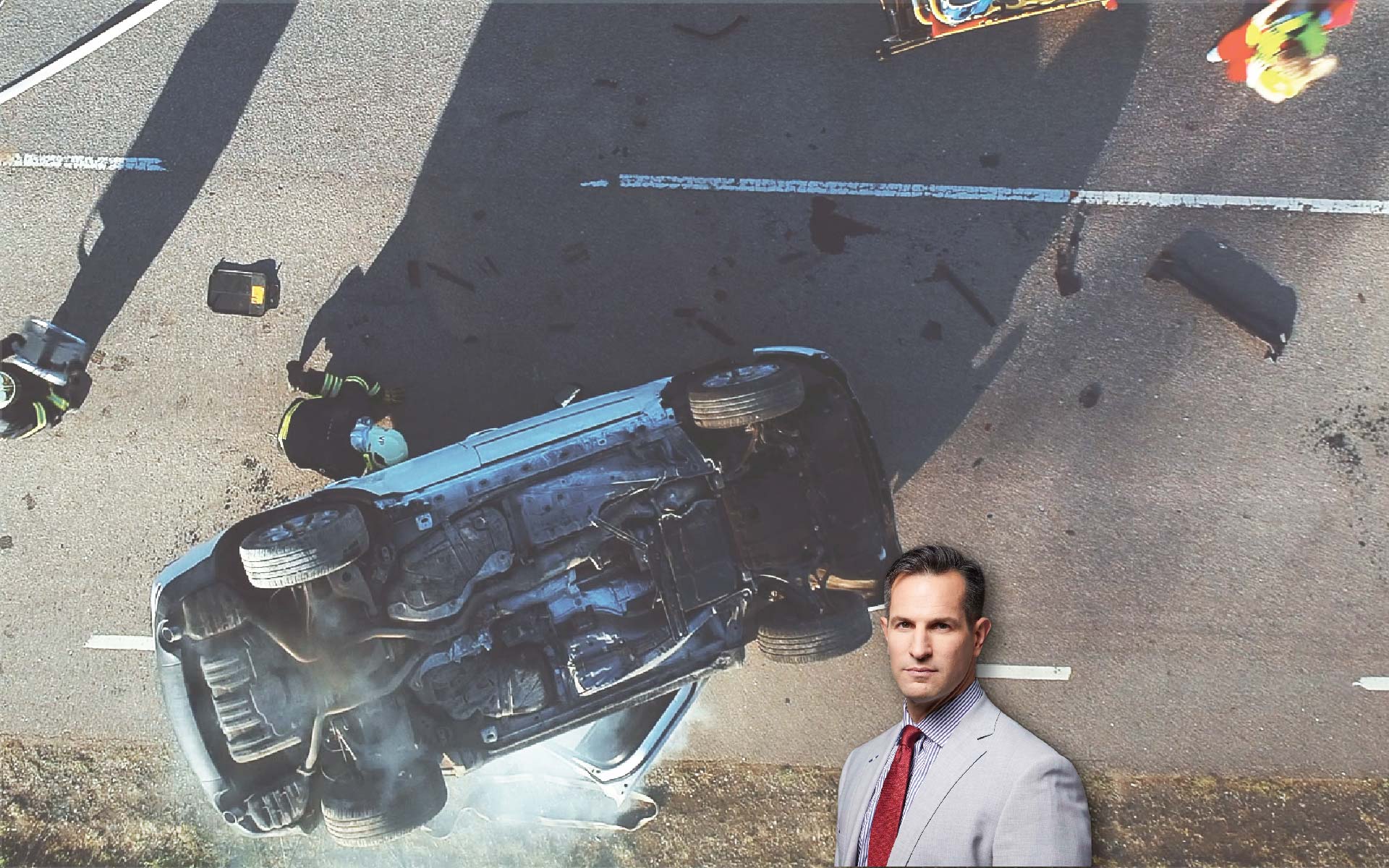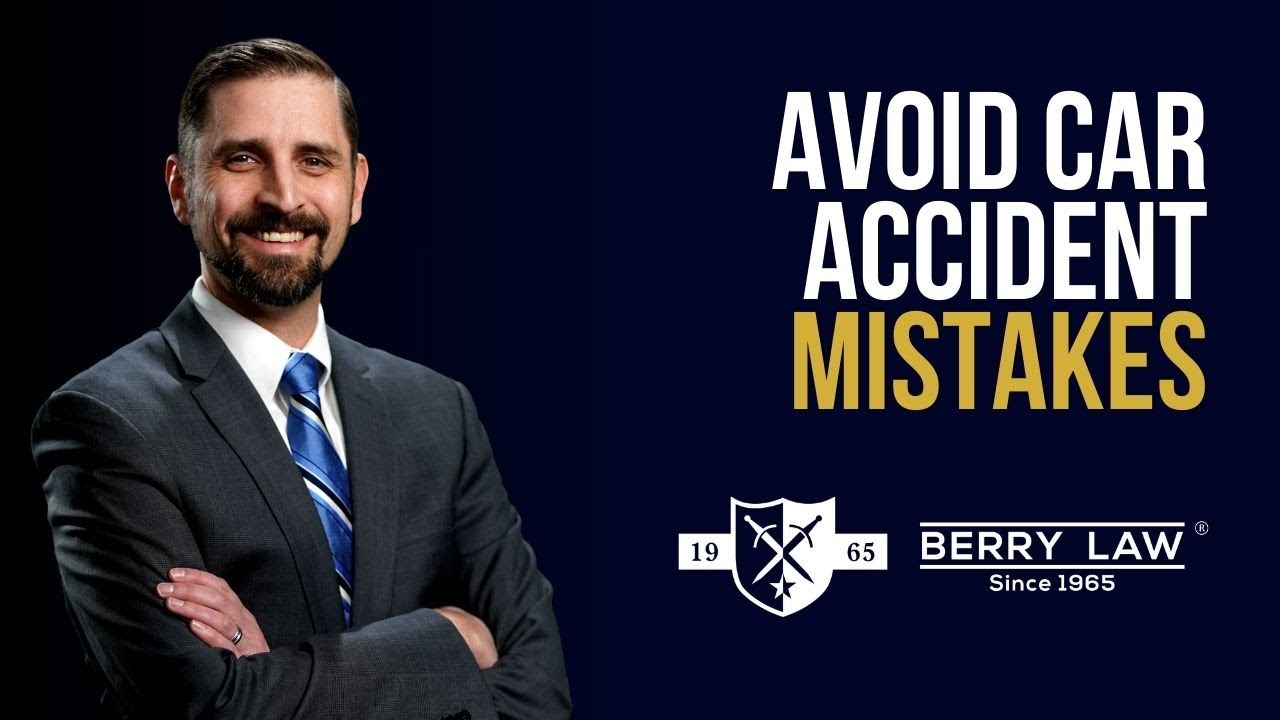Head-on collisions are by far the most dangerous type of auto accident in terms of injuries and fatalities.
Getting into a head-on collision doesn’t just affect the drivers and passengers involved. These accidents can have a ripple effect on surviving loved ones’ abilities to cope with the aftermath.
Berry Law Firm aims to empower all drivers and passengers with the knowledge to confidently pursue a personal injury claim after a head-on collision.
This guide serves as a comprehensive resource, with insights from an Omaha head-on car accident lawyer, to educate readers on the causes of head-on collisions, the common injuries sustained, and tips for seeking legal help after such an accident.
What Causes Head-On Collisions?
Understanding the causes of head-on collisions won’t stop them from happening.
However, it will provide insight into how fault for these accidents isn’t always what it initially may seem. The most common causes of head-on collisions include:
- Distracted driving: One of the leading causes of all types of accidents, distracted driving includes manual, cognitive, and visual distractions. Even if the head-on car crash resulted from one driver’s inattention, both parties may share fault if, for example, the other driver was also on their phone.
- Impaired driving: Driving under the influence of alcohol or drugs dramatically increases the likelihood of a head-on car crash. This can cause drivers to swerve into oncoming traffic or not safely react to a potential collision. When impaired drivers are part of a head-on collision, they or their insurance company often bear most or all of the liability.
- Fatigue: Driving while tired can have similar effects to impaired driving. A lack of attention and slower reaction times can lead to a driver drifting into oncoming traffic. There are strict laws about fatigued driving, especially for commercial truck drivers. Injured parties who feel a driver has violated these laws may have a strong argument for negligence and compensation.
- Improper passing: Drivers who attempt to pass another vehicle without having enough time or space can easily cause a head-on collision. Depending on the traffic laws, the passing driver may be at fault for the entire accident or share the majority of fault.
- Speeding through traffic lights: It isn’t uncommon for drivers to speed up to make it through a yellow or red light. When they fail to stop on time, the result is often a head-on collision with another vehicle that has the right of way. The driver who ran the light will likely be liable for damages and injuries.
- Failure to yield: Drivers must yield the right of way in certain situations, such as at stop signs, yield signs, and when entering a highway. When a driver fails to do so and causes a head-on accident with another vehicle, they are likely at fault for the collision.
- Road conditions: Municipal or state entities that negligently maintain roads may be liable for any resulting head-on collisions. This is especially true when the road is not properly marked or maintained, causing confusion or danger for drivers.
- Vehicle malfunctions: Sometimes, a head-on collision is caused by a vehicle malfunction, such as brake failure or steering issues. The manufacturer may be held liable for damages and injuries under product liability laws in these cases.
It doesn’t matter how the collision happened. What matters is that injured parties seek legal help to receive maximum compensation for their losses.
Failure to do so could result in costly medical bills, lost wages, and emotional distress that lasts for months or years.
Where Do Head-On Collisions Occur Most Frequently?
Intersections
Whether traffic is controlled or not, intersections are a common site for head-on collisions. Drivers may turn onto a one-way street in the wrong direction or run a red light, causing incredible damage, even if they are only going at a low speed.
Rural Areas
Head-on collisions also frequently occur in rural areas with two-lane roads and higher speeds. Drivers may attempt to pass slower vehicles or underestimate the distance and speed of an approaching vehicle, resulting in a catastrophic accident.
 Construction Zones
Construction Zones
When construction occurs on a roadway, what was once a two-lane road may suddenly be reduced to one lane, causing drivers to merge into oncoming traffic. This can lead to confusion and unexpected head-on collisions.
Highways
Not all highways are located on open stretches of land. Many pass through densely populated areas, allowing drivers to enter oncoming traffic when attempting to merge on or off the highway. These severe accidents often result in catastrophic injuries and multiple fatalities.
Residential Neighborhoods
Even in residential neighborhoods with lower speed limits, head-on collisions can occur. This is especially true when there are narrow streets and limited visibility around corners.
Residential car accidents aren’t limited to moving vehicles. They can also involve parked cars, unloading delivery trucks, and pedestrians.
Parking Lots
Head-on collisions can also occur in parking lots, especially when drivers are not paying attention to their surroundings and fail to yield the right of way. This is common during busy shopping seasons or at popular sporting events.
What Are Common Injuries From Head-On Car Accidents?
Traumatic Brain Injuries
While any auto accident presents a risk for TBI, head-on crashes typically result in more severe injuries due to the force of impact.
These traumatic brain injuries can cause long-term disabilities and require extensive medical treatment, leading to high medical bills and lost wages.
The most common head injuries from these accidents include:
- Concussions
- Skull fractures
- Brain bruising and bleeding
- Diffuse axonal injuries (tearing of brain tissue)
No matter the severity of these injuries, it is essential to seek the help of a medical professional and car accident lawyer to properly assess and address the lasting effects of a head-on collision.
Doing so ensures a proper recovery plan and maximum compensation for damages and losses.
Spinal Cord Injuries
Head-on collisions can also result in severe spinal cord injuries, often leading to permanent paralysis or limited mobility.
These injuries are not only physically debilitating but also emotionally and financially devastating for accident survivors and their families.
The extent of damage has far-reaching consequences for injured parties, often requiring long-term medical care and lifestyle adjustments.
Often, compensation from a head-on collision may be necessary to cover the extensive costs of ongoing treatments and care.
Broken Bones
The force of impact in head-on car accidents can crush, twist, or snap bones in the body. This can lead to severe fractures that require multiple surgeries and long recovery periods.
The most common bone breaks after a head-on car crash include:
- Fractured ribs, which can result in punctured lungs or other internal injuries
- Broken arms and legs, often requiring casts and physical therapy for proper healing
- Facial fractures, which can lead to permanent disfigurement and require reconstructive surgery
Broken bones may also lead to other complications, such as nerve damage or infections, which can further complicate the healing process.
Cuts and Lacerations
Especially severe in collisions where drivers and passengers aren’t wearing a seatbelt or are otherwise ejected from the vehicle, cuts and lacerations can result in profound blood loss and infections, as well as permanent scarring or disfigurement.
Other severe injuries in head-on collisions may include:
- Amputations of limbs or digits
- Impalement from objects in the vehicle or on the road
- Severe bruising and contusions from impact with the dashboard, steering wheel, or other hard surfaces
These injuries may require immediate medical attention and long-term care to properly heal. They can also lead to disfigurement and emotional trauma for injured parties.
Soft Tissue Damage
These injuries can cause severe pain and discomfort, requiring extensive medical treatment to fully recover from. The most common soft tissue injuries in head-on accidents include:
- Whiplash, which is a neck injury caused by the sudden jerking motion of the head during impact
- Sprains and strains in muscles and tendons, often in the back or shoulders, from the force of impact
- Torn ligaments, particularly in the shoulders, knees, and ankles, from bracing against the vehicle during impact
These injuries may not only cause physical pain but also emotional distress as accident survivors struggle to return to their normal daily activities.
Seeking compensation for these injuries can help alleviate financial stress and support ongoing medical treatment.
Emotional and Psychological Trauma

Every type of accident has the potential to create emotional and psychological trauma for those involved.
However, head-on collisions are particularly traumatic due to the suddenness and severity of impact. Survivors may experience symptoms such as:
- PTSD (post-traumatic stress disorder), which can cause flashbacks, nightmares, and severe anxiety
- Physical limitations and financial strain from recovery often cause depression and other mood disorders
- Survivor’s guilt or other feelings of grief and loss
- Amaxophobia or other driving-related fears
These injuries are not always apparent or easily treated but can have long-lasting effects on a person’s mental health.
Berry Law’s Team Provides You With Multiple Attorney Perspectives
What Should I Do After A Head-On Collision?
Seek Further Medical Attention
Due to the severe nature of these accidents, those involved will likely receive initial EMS treatment at the scene. Even when injuries are deemed minor, seeking further medical attention is essential to ensure the full extent of damages is documented and can be included in a personal injury claim.
Contact A Car Accident Attorney
Even with excellent car insurance, the extent of damages may exceed the available insurance coverage. In these cases, a car accident lawyer can help recover compensation for medical bills, lost wages, and other damages, in addition to negotiating down what you may owe for the medical treatment and other costs.
It isn’t just legal action that makes contacting a car accident lawyer a good idea.
With injuries making it difficult to file a claim and work with insurance companies within the statute of limitations to pursue justice, an experienced lawyer can help ensure all criteria are met for a favorable outcome.
Avoid Talking About The Case With Anyone
While seeking support from family and friends is essential after an accident, avoid discussing the case online or with other parties involved without an attorney.
Any statements made at the scene or posted to social media can be used to diminish or deny a personal injury claim, robbing injured parties of the compensation needed to make a complete recovery.
All correspondence, phone calls, or emails from insurance companies and other parties should be directed to a car accident attorney. This can help protect the rights of those involved and ensure they receive maximum compensation for injuries.
Injured In A Head-On Collision? Seek the Help Of Experienced Personal Injury Lawyers
Head-on collisions aren’t always avoidable. However, those involved can always hold the responsible parties accountable with the help of an award-winning personal injury law firm.
Whether the accident was caused by negligence or distracted driving, our car accident lawyers are ready to provide comprehensive and compassionate legal representation for our clients.
For more information on pursuing a claim, navigating the legal process, and receiving compensation for damages, schedule a free case evaluation with a Berry Law car accident attorney.



